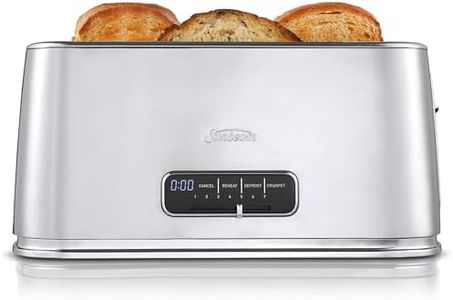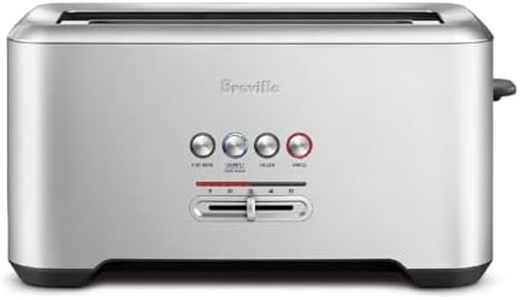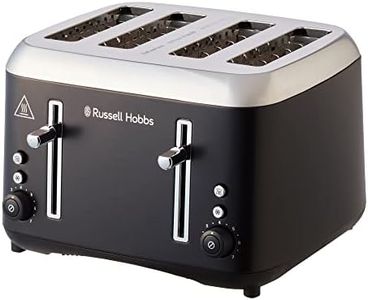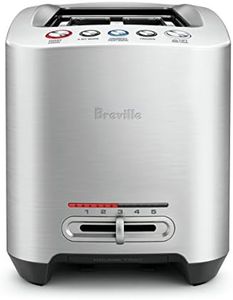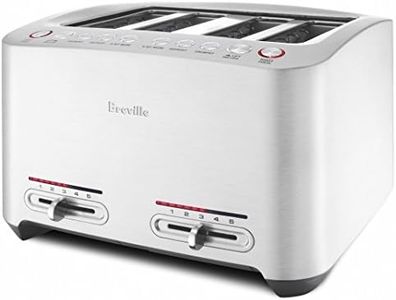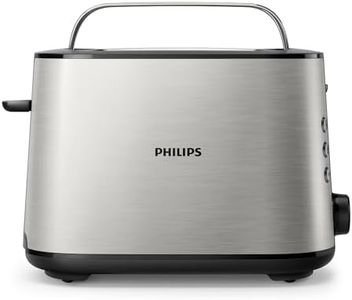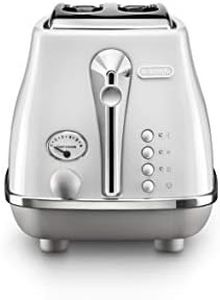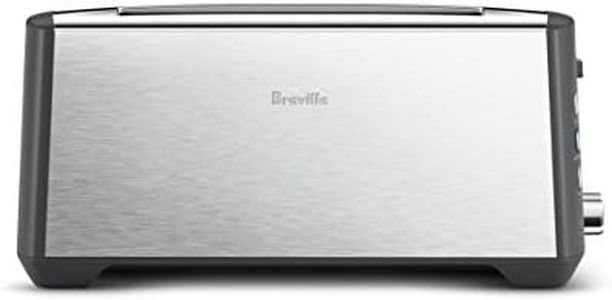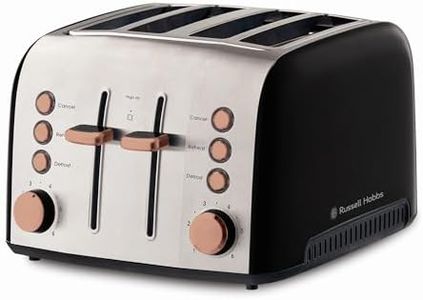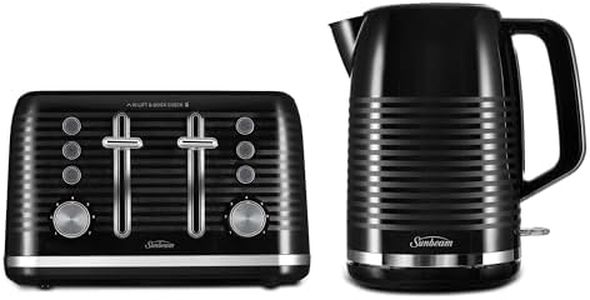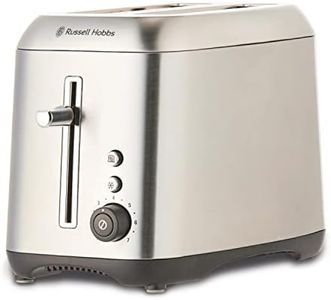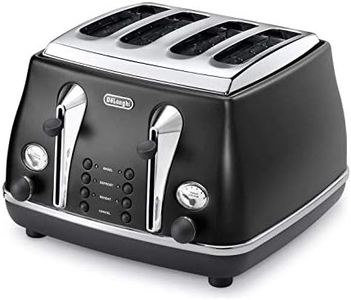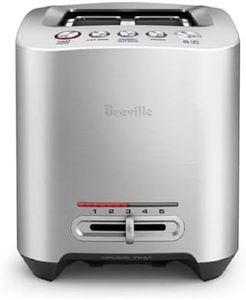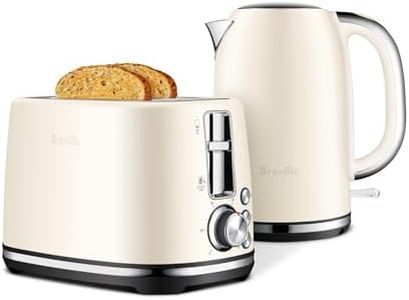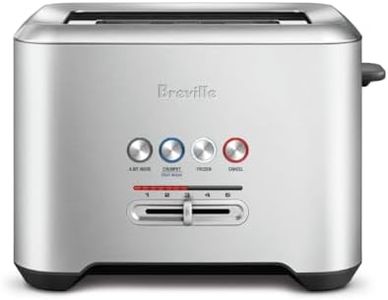We Use CookiesWe use cookies to enhance the security, performance,
functionality and for analytical and promotional activities. By continuing to browse this site you
are agreeing to our privacy policy
10 Best Toasters
From leading brands and best sellers available on the web.Buying Guide for the Best Toasters
Choosing the right toaster isn't just about browning bread; it's about finding a convenient, reliable, and safe companion for your daily breakfast or snack routines. Toasters come in various styles and with different features, so understanding what's available and what matches your needs will help you make a better choice. Consider how often you'll use your toaster, what types of bread or baked goods you'll toast, how much counter space you have, and which features will genuinely make life easier for you.Number of SlotsThe number of slots in a toaster refers to how many pieces of bread (or similar items) you can toast at one time. This is important because it determines how quickly you can toast for yourself or a group. Two-slot toasters are compact and work well for singles or couples, whereas four-slot toasters are more convenient for families or people who often toast several slices at once. Consider your household size and whether batch toasting would slow down your breakfast routine before choosing.
Slot WidthSlot width dictates the size of bread or baked goods you can fit into the toaster. Standard slots fit regular sandwich bread, but wider slots are better for bagels, thick artisan breads, or pastries. If you enjoy toasting more than just thin slices, look for a toaster with extra-wide slots. Assess the usual thickness of what you toast to decide on the slot width you’ll need.
Browning SettingsBrowning settings let you control how light or dark your toast becomes, which is important for getting your toast just the way you like it. Toasters usually have adjustable dials or buttons that increase in number with more precise models. If you’re particular about your toast or multiple people with different preferences will use the toaster, more settings give you more control. Think about whether a simple, basic range is fine for you, or if you want precise adjustment.
Special FunctionsSpecial functions may include defrost (for frozen bread), reheat (to warm up without browning), bagel (toasts one side more than the other), or cancel (quickly stops toasting). These add convenience and flexibility if you often toast different types of bread, frozen items, or just want more control over the process. Decide which, if any, of these features would make your morning routine smoother.
Ease of CleaningEase of cleaning depends on whether the toaster has features like a removable crumb tray. This is important because it helps prevent burnt crumbs and keeps the appliance safe and hygienic. Look for models with an accessible crumb tray and a design that doesn’t trap crumbs in hard-to-reach spots. If you dislike cleaning up, prioritize an easy-to-clean design.
Size and Counter SpaceToaster size affects how much space it takes up on your kitchen counter. A compact model is great for small kitchens, while a larger one might offer more features or capacity but take up more room. Think about where you’ll keep your toaster and measure the available space to ensure a good fit that won’t clutter your countertop.
Build Quality and SafetyBuild quality refers to how sturdy and well-made the toaster is. Safety features can include automatic shut-off, cool-touch exteriors, or stable bases. Good build quality ensures longer-lasting performance, while safety features help prevent accidents or burns. If the toaster will be used by children, or if it will see heavy use, prioritize safety and durable materials.
